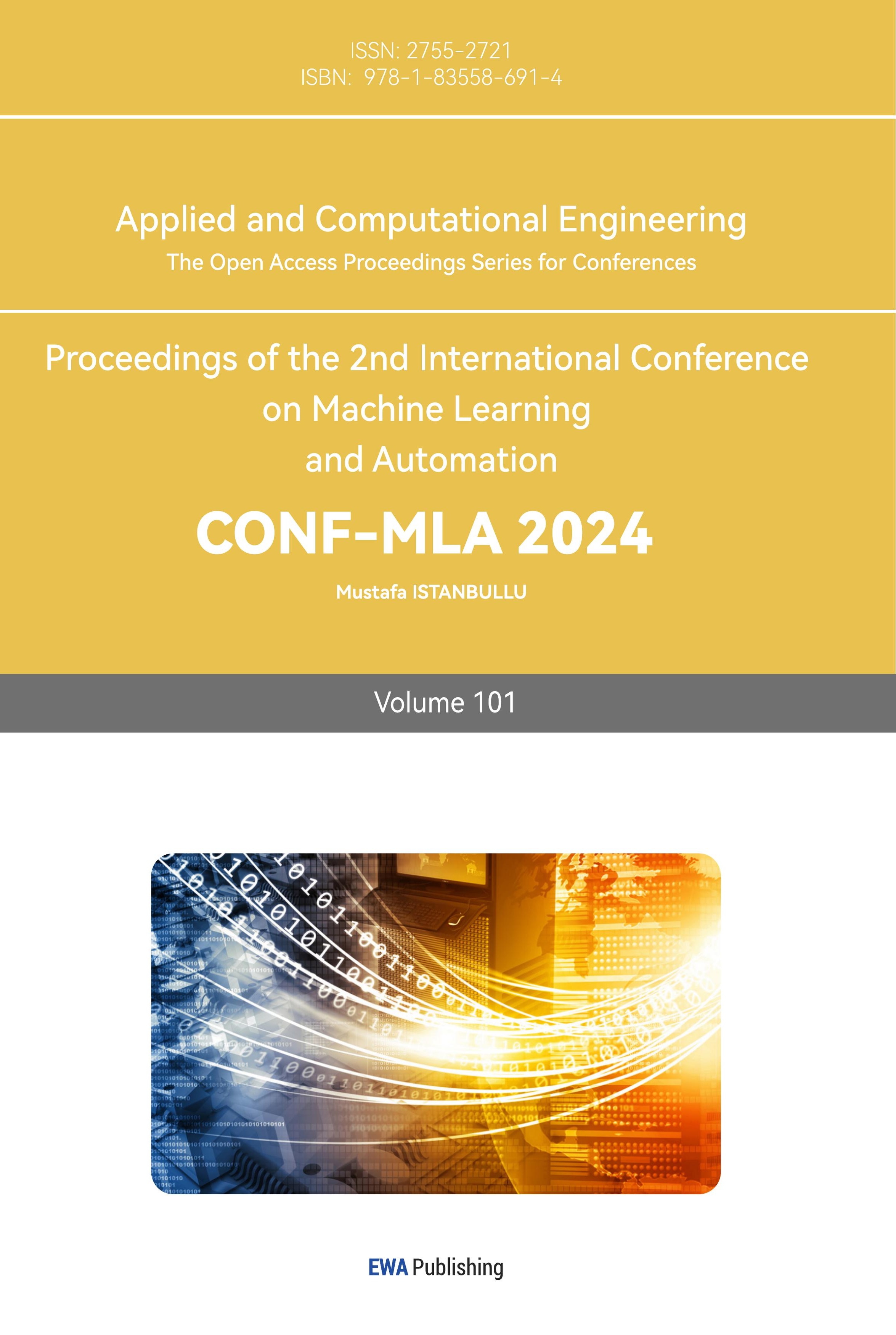1. Introduction
With the increasing usage of electronic devices and advancements in image processing and computer technologies, editing and processing images have become more convenient. Over time, it has become easier to perform and more challenging to detect photo manipulation and forgeries. Despite this, digital photos continue to be widely used in daily life. On one hand, it is now easier than ever to maliciously manipulate digital photographs and spread false information on social media, necessitating users to be more adept at discerning the authenticity of images. On the other hand, ensuring the authenticity of images used for scientific discoveries, courtroom evidence, military intelligence, and similar purposes is critical, as any compromise can have serious repercussions for political and social stability. Consequently, various methods for detecting image tampering and forgery have emerged [1]. Figure 1 illustrates a recent case of image tampering.
Detection techniques for digital photo modification and forgery are broadly classified into active and passive procedures. Active detection approaches involve pre-adding additional information, such as digital watermarks or digital signatures, to photographs to aid detection. However, these methods have significant drawbacks. In contrast, passive detection techniques, also known as blind detection techniques, analyze the properties of digital images without relying on any pre-encoded information or signs. Instead, they assess the image itself to directly determine its validity. Image splicing, the technique of clipping a section from one or more photos and pasting it into a target image without alteration, is a key focus area in passive investigations of digital photo manipulation. This paper proposes a passive detection technique based on learning to identify image splicing forgeries. When images are spliced for forging, sharp edges appear at the boundaries of the pasted region, creating new micro-patterns. This disrupts the local distribution of micro-edge patterns and frequencies. Based on this concept, we propose a method to express such variations using the Discrete Cosine Transform (DCT) and Local Binary Patterns (LBP). Within the LBP domain, discriminative local features are extracted using 2D DCT. Support Vector Machines (SVMs) are then employed for classification.
To demonstrate the effectiveness of the proposed strategy, extensive experiments were conducted on two datasets, with comparisons drawn against several existing techniques. The remaining sections of this paper are structured as follows: Section Two presents related works, Section Three covers the relevant fundamental knowledge, Section Four details the proposed approach, Section Five discusses the experimental analysis, Section Six showcases and discusses the findings, Section Seven compares the proposed method with existing methods, and Section Eight concludes with findings and suggestions for further research..
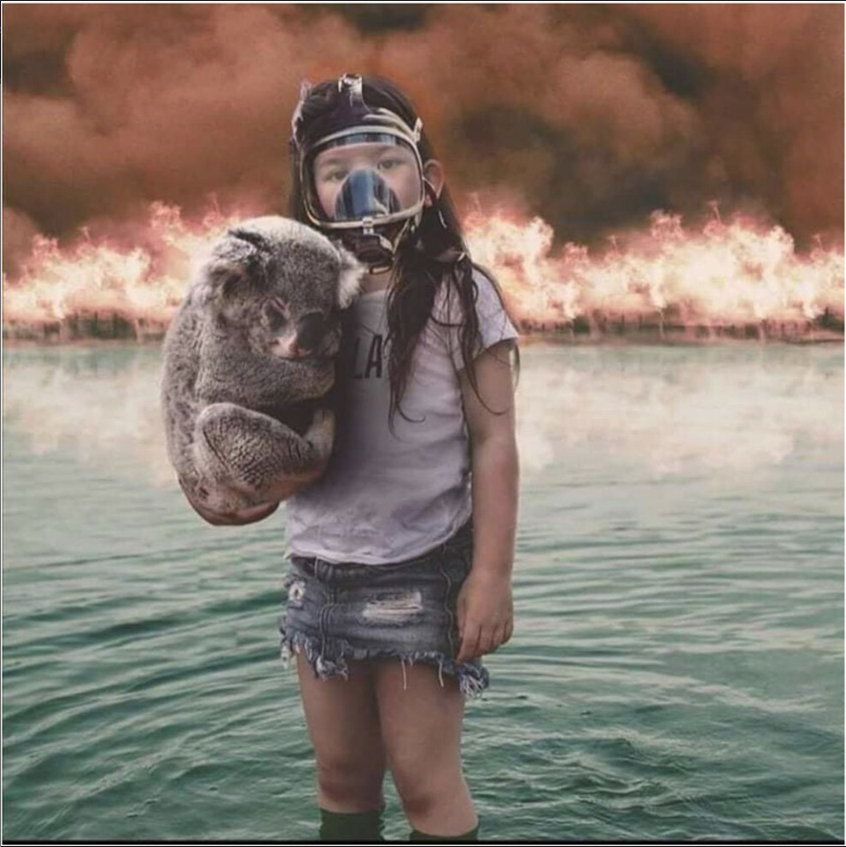

Figure 1. Images related to the Australian bushfire crisis in 2019-2020 (left: spliced image, right: original image) (Photo credit: Original).
2. Related Works
Many passive techniques for detecting picture splicing forgeries have been developed recently. The overview of a few exemplary techniques is given in the paragraphs that follow.
Reference combines an image splicing detection technique centered using Fractal Entropy for Texture Features with an SVM classifier [2]. The accuracy of this technique was 96% on the CASIA TIDE v1.0 [3]. Reference detects picture splicing using a low-dimensional homogeneous feature set generated by principal component analysis [4]. Support vector machines and local binary patterns serve as the foundation for this strategy. Using the Columbia Dataset, the accuracy was 85% [5]. Reference proposes an upgraded Markov features based picture splicing detection method applying SVM to categorization [6]. Using the Columbia Uncompressed Dataset, its approach yielded an accuracy of 94.38% [7]. For a picture splicing detection method centered on LBP and the Illumination-Reflectance model, Reference uses an LDA classifier. Using the CASIA TIDE v2.0, this method's accuracy rate was 94.59% [8].
A technique for detecting picture splicing forgeries based on multi-scale feature priors is presented in Reference [9]. This method combines a feature prior and cyclic residual network module with an external attention mechanism. Using the COLUMBIA, this technique yielded an 88% precision rate. In Reference, an affordable multiscale fusion image-splicing and tamper-detection model is applied [10]. Based on an enhanced MobileNetV2, the suggested Mobile-Pspnet network comprises of a pyramid pooling module and a feature extraction module. The computational complexity and number of parameters are decreased by this approach. On the CASIA dataset and the Columbia Dataset, the precision of this approach was 91% and 96.4%., respectively. All of the above stated approaches differ primarily in how they represent the structural alterations brought about by forgeries. The key to these approaches is how well they capture these shifts. This work presents a method to describe the tampering changes in pictures founded on the incorporation of the DCT and LBP.
3. Relevant Fundamental Knowledge
LBP (Local Binary Pattern) is a texture description approach that represents the local texture qualities of an image by comparing its pixel values with those of its neighboring pixels. The exact phases of LBP are as follows:
Pick the pixel in the middle. Select a circular neighborhood centered on each pixel, with a radius of R. A typical neighborhood dimensions are 3x3.
Review the comparison of the adjacent pixels. Analyze the grayscale values of the P closest neighbors of the center pixel. Mark a pixel as 1 if its grayscale value is more than or equal to the center pixel; if not, mark it as 0. This is the expression for the formula:
\( s(x)=\begin{cases} \begin{array}{c} 0, x \lt 0 \\ 1, x≥0 \end{array} \end{cases} \) (1)
Create the binary blueprint. These defined binary values can be arranged either clockwise or counterclockwise to generate a binary number.
Determine the LBP figure. This binary integer reflects the LBP value of the central pixel; convert it to a decimal number. The following formula may be expressed. The grayscale values of the surrounding pixels are represented by \( {g_{p}} \) , the center pixel by \( {g_{c}} \) , and the coordinates of the center pixel by \( ({x_{c}},{y_{c}}) \) [11]:
\( LBP({x_{c}},{y_{c}})=\sum _{p=0}^{P-1}s({g_{p}}-{g_{c}})∙{2^{p}} \) (2)
Discrete Cosine Transform, or DCT, is mostly utilized for image reduction and feature extraction. It has the ability to convert spatially stored visual data into a frequency domain. The exact phases of DCT are as follows:
Divide the picture into multiple smaller parts, maybe 16 by 16 or 8 by 8.
Apply DCT: Apply DCT to each image block so that the values of the pixels in the domain of space are translated into the frequency domain DCT coefficients.
The following is the formula for one-dimensional DCT:
\( F(u)=\sum _{a=0}^{N-1}f(a)cos[\frac{π}{N}(a+\frac{1}{2})u] \) (3)
The following is the formula for two-dimensional DCT:
\( F(u,v)=\frac{1}{4}α(u)α(v)\sum _{a=0}^{N-1}\sum _{b=0}^{N-1}f(a,b)cos[\frac{(2a+1)uπ}{2N}]cos[\frac{(2b+1)vπ}{2N}] \) (4)
And
\( α(u)=\begin{cases} \begin{array}{c} \frac{1}{\sqrt[]{2}}, u=0 \\ 1, u≠0 \end{array} \end{cases} \) (5)
\( α(v)=\begin{cases} \begin{array}{c} \frac{1}{\sqrt[]{2}}, v=0 \\ 1, v≠0 \end{array} \end{cases} \) (6)
Since the low-frequency components hold most of the visual information, use the DCT coefficients from the low-frequency part for choosing features.
4. Techniques for Detecting Image Splicing
This paper's picture splicing detection technique may be broken down into four key steps: (1) Extract the image's chrominance channels by converting the RGB picture to the YCbCr color system. (2) Divide the chrominance channels into multiple blocks. (3) Extract features from each block. (4) Train and predict using an SVM classifier.
Figure 2 displays the suggested method's flowchart.

Figure 2. Flowchart (Photo credit: Original).
4.1. Preprocessing the Image
More than any other channel, the chrominance channels are capable of encoding evidence of picture manipulation [12]. Therefore, in this experiment, a color space that is YCbCr is initially created from the RGB picture and the color channels are Cb and Cr. Subsequently, the channels of color Cb and Cr are separated into many picture blocks using extraction.
4.2. Feature Extraction
An picture may be tampered with by splicing it together by copying and pasting the image. The original picture undergoes structural alterations throughout the pasting process. The image's bounds and pasted areas will have different tiny texture patterns, and their edges will have discontinuities. The picture pixels in that area become uncorrelated as a result, and the local frequencies of the image alter [13, 14]. Therefore, the secret to effectively identifying picture alteration is to capture these fundamental changes. LBP is a very useful texture descriptor for images, which may be used to draw attention to and amplify tampering artifacts [15]. Monitoring the alterations in the LBP image's local distribution of frequencies is the next stage. To do this, the LBP picture is first converted to the frequency domain using block-based DCT, and each block's DCT coefficient statistics are then computed.
Drawing on the introduction above, this experiment models the tampering traces in photos using LBP and DCT. Each chrominance component is first split into overlapping blocks with a 50% overlap for localization reasons. Since LBP is an extremely powerful image texture descriptor, it is then applied to each block in this experiment to emphasize and highlight the tampering artifacts introduced in the original image (i.e., sharp edges at the boundaries of the area that was glued and the micro-edges within it) and increase their visibility in the picture. Lastly, to record alterations to the image's local frequency distribution, the LBP-coded block is changed into the sphere of frequencies employing the DCT methodology. A feature vector is created by organizing the matching DCT coefficients' standard deviation.
4.3. Training and Testing Using the SVM Classifier
The classification challenge of picture splicing detection is identifying manipulated and genuine photos. In high-dimensional space, Support Vector Machines (SVM) may find the ideal separation hyperplane that optimizes the margin between various data points. Regression analysis and classification are two applications for this supervised learning model. Therefore, SVM is used for both training and testing in the methods described in this study.
The specific procedure is as follows: first, the LBP and DCT features of the training set images are extracted using the aforementioned methods and then sent to the SVM for instruction. The predictive model is established using cross-validation, which yields the SVM's optimum parameters. The next step is to determine if the photos under investigation have been spliced by feeding the LBP and DCT features that were retrieved from the test set images into the SVM for classification. Experimental Analysis
This section will introduce the dataset used in this experiment and describe the experimental procedure.
5. Experimental Analysis
The experimental approach and dataset utilized in this experiment will be introduced in this section.
5.1. Experimental Data
COLUMBIA and CASIA TIDE v1.0 were used in this investigation.
There are a total of 1721 photos in the CASIA TIDE v1.0, of which 800 are genuine and 921 are tampered with. Every image is in JPG format, and it can be found in two sizes: 384 x 256 and 256 x 384.
There are 363 photos altogether in the COLUMBIA, 180 of which are tampered with and 183 of which are genuine. The images are in the TIFF or BMP format and range in size from 757x568 to 1152x768.
Figures 3 and 4 provide selections of photos from the two datasets. Table 1 presents detailed data on these two datasets.

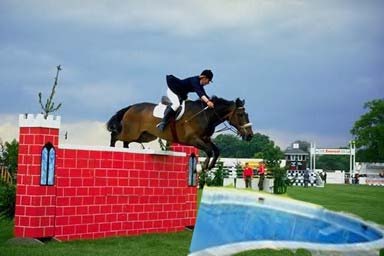
Figure 3. A selection of photos from the CASIA TIDE v1.0 (left: authentic image, right: tampered image) (Photo credit: Original).
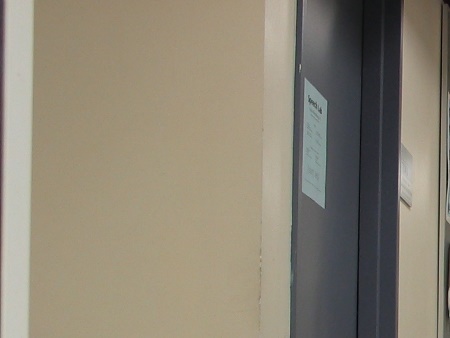
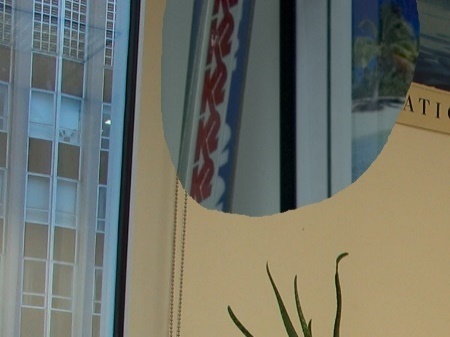
Figure 4. A selection of photos from the COLUMBIA (left: authentic image, right: tampered image) (Photo credit: Original).
Table 1. Experimental Datasets.
Dataset | Image Count Authentic Images | Tampered Images | Total Images | Image Formats | Image Sizes |
CASIA TIDE v1.0 Dataset | 800 | 921 | 1721 | Jpg | 384×256, 256×384 |
COLUMBIA Dataset | 183 | 180 | 363 | tif, bmp | 757×568 to 1152×768 |
Five-fold cross-validation was employed in this work. Every one of the dataset's remaining four subgroups was alternately utilized as both the testing and training sets after five subsets were chosen at random. This process was used to obtain the optimal parameters that resulted in the highest cross-validation accuracy. The Spyder platform was used to experiment with each set of results ten times, and the average of the outcomes was used to determine the final result.
5.2. Evaluation Metrics
Four metrics were included in this experiment to assess the model.
The exact details of the assessment measures are as follows:
Accuracy. The proportion of correct projections made relative to all predictions is known as accuracy.
\( (TP:True Positive,TN:True Negative,FN:False Negative,FP:False Positive.) \)
\( Accuracy=\frac{TP+TN}{TP+TN+FN+FP} \) (7)
Precision. Precision is described as the percentage of actual positive outcomes among all samples that were predicted to be positive.
\( Precision=\frac{TP}{TP+FP} \) (8)
Recall. The percentage of real positive samples among all actual affirmative examples that were accurately predicted is known as recall.
\( Recall=\frac{TP}{TP+FN} \) (9)
F1 Score. A balanced indicator of both metrics' performance is the F1 Score. It is the accuracy and recall harmonic average.
\( F1 Score=2×\frac{Precision×Recall}{Precision+Recall} \) (10)
5.3. Experimental Parameters
Numerous factors, including color channels, block division kinds and sizes, and LBP parameters, are part of the model utilized in this experiment. Numerous studies were conducted on the CASIA TIDE v1.0 and COLUMBIA, looking at different parameter combinations to find the optimal set of variables for the best outcomes. The results of the studies showed that chrominance channels, 16x16 not overlapping blocks, and LBP parameters the value of R=8 and P=1 produced the best results. Thus, the aforementioned parameters were used in this study to execute the final experiment and acquire findings.
6. Results and Discussion of the Experiment
The experimental findings on two datasets—CASIA TIDE v1.0 and COLUMBIA—will be covered in this section.
Experimental Results Using COLUMBIA.
Table 2 displays the experimental findings on the COLUMBIA.
Table 2. Experimental Outcomes on the COLUMBIA.
Using Dataset | Accuracy | Precision | Recall | F1 Score |
COLUMBIA | 94.06% | 94.14% | 94.07% | 94.10% |
6.1. Experimental Results Using CASIA TIDE v1.0
The findings from the CASIA TIDE v1.0 experiment are displayed in Table 3.:
Table 3. Experimental Outcomes on the CASIA v1.0.
Using Dataset | Accuracy | Precision | Recall | F1 Score |
CASIA TIDE v1.0 | 97.68% | 97.77% | 97.58% | 97.67% |
6.2. Ablation Study
The experimental results demonstrate that using LBP and DCT feature extraction on both datasets yields consistently good results, thereby proving the reliability of the experiments. This study also used methods that extract features using only one of these approaches, i.e., utilizing either LBP features or DCT features alone, in order to investigate the efficacy of combining LBP and DCT. Table 4 displays the outcomes of utilizing LBP alone, DCT alone, and their combination.
Table 4. Results of Different Feature Selection Approaches.
Features | Accuracy |
LBP | 86.34% |
DCT | 90.68% |
LBP and DCT | 94.06% |
It is evident that better outcomes were obtained when LBP and DCT were combined.
7. Comparison with Existing Methods
The Accuracy is compared in this part with a few current techniques. Table 5 presents the findings.
Table 5. Comparison with Other Methods.
Methods | Accuracy |
Base on Texture Features with Fractal | 96% |
Based on improved Markov features | 94.38% |
based on Illumination-Reflectance model and LBP | 94.59% |
Proposed method | 97.68% |
The experimental results show that this study's outcomes are better than those of certain other approaches currently in use.
8. Conclusion
This paper proposes a method for detecting image splicing based on the integration of Local Binary Patterns (LBP) and Discrete Cosine Transform (DCT) features. The process begins by converting the RGB input image to the YCbCr color space, where the Cb and Cr color channels are divided into overlapping blocks. Each block's LBP code is then transformed into the DCT domain. The standard deviation of each DCT coefficient for each block is calculated and used as a feature. An SVM classifier is employed for classification. The proposed method was thoroughly evaluated using two benchmark datasets: CASIA TIDE v1.0 and COLUMBIA. The results demonstrated the effectiveness of the combined DCT and LBP approach, achieving accuracies of 94.06% and 97.68% on these datasets, respectively. These outcomes surpass several existing methods, underscoring the robustness of the proposed strategy.
Future research will focus on exploring alternative detection methods and extending their application to other areas of image tampering detection, such as copy-move forgery detection. Additionally, experiments will be conducted using larger and more diverse datasets to further validate the method's efficacy.
References
[1]. Thakur, R., & Rohilla, R. (2020). Recent advances in digital image manipulation detection techniques: A brief review. Forensic Science International, 312, 110311. https://doi.org/10.1016/j.forsciint.2020.110311.
[2]. Al-Azawi, J., Al-Saidi, M. G., Jalab, N. A., Ibrahim, R. W., & Baleanu, D. (2021). Image splicing detection based on texture features with fractal entropy. Computational Materials and Continua, 69(3), 3903-3915. https://doi.org/10. 32604/cmc. 2021.020368.
[3]. Dong, J., Wang, W., & Tan, T. (2013). CASIA Image Tampering Detection Evaluation Database. Paper presented at the 2013 IEEE China Summit & International Conference on Signal and Information Processing (ChinaSIP), July 6-10, 2013, Beijing, China. https://doi.org/10.1109/ChinaSIP. 2013. 6491686.
[4]. Das, D., Naskar, R., & Chakraborty, R. S. (2023). Image splicing detection with principal component analysis generated low-dimensional homogeneous feature set based on local binary pattern and support vector machine. Multimedia Tools and Applications, 82(17), 25847-25864. https://doi.org/10. 1007/s11042-023-14658-w.
[5]. Ng, T.-T., Chang, S.-F., & Sun, Q. (2004). ADVENT Technical Report: A data set of authentic and spliced image blocks.
[6]. Liu, J., Li, X., & Jiang, C. (2020). Research on image stitching detection based on improved Markov features. Information Technology & Cyber Security, 39(2), 13-18. https://doi.org/10.19358/j.issn.2096-5133.2020.02.003.
[7]. Hsu, Y. F., & Chang, S. F. (2006). Detecting image splicing using geometry invariants and camera characteristics consistency. Paper presented at the 2006 IEEE International Conference on Multimedia and Expo, July 9-12, 2006.
[8]. Niyishaka, P., & Bhagvati, C. (2020). Image splicing detection technique based on illumination-reflectance model and LBP. Multimedia Tools and Applications, 80(2), 2161-2175. https://doi.org/10.1007/s11042-020-09707-7.
[9]. Lv, J., Lu, W., Wang, M., Liu, Y., Shi, K., Huang, H., & Zhao, H. (2022). Image stitching tamper detection based on multi-scale feature prior. China Science and Technology Papers, 17(11), 1267-1275. https://doi.org/10.3969/j.issn. 2095-2783.2022.11.014.
[10]. Zhao, D., & Tian, X. (2022). A multiscale fusion lightweight image-splicing tamper-detection model. Electronics, 11(16). https://doi.org/10.3390/ electronics 11162621.
[11]. Kaur, N., Nazir, N., & Manik. (2021). A review of local binary pattern based texture feature extraction. Paper presented at the 2021 9th International Conference on Reliability, Infocom Technologies and Optimization (Trends and Future Directions) (ICRITO), September 3-4, 2021.
[12]. Alahmadi, A. A., Hussain, M., Aboalsamh, H., Muhammad, G., & Bebis, G. (2013). Splicing image forgery detection based on DCT and local binary pattern. Paper presented at the 2013 IEEE Global Conference on Signal and Information Processing, December 3-5, 2013.
[13]. Shi, Y. Q., Chen, C., & Chen, W. (2007). A natural image model approach to splicing detection. Paper presented at the Proceedings of the 9th Workshop on Multimedia & Security, Dallas, Texas, USA. https://doi.org/10.1145/ 1288869. 1288878.
[14]. Zhang, Y., Zhao, C., Pi, Y., & Li, S. (2012). Revealing image splicing forgery using local binary patterns of DCT coefficients. Paper presented at the International Conference on Communications, Signal Processing, and Systems.
[15]. Shen, K., & Chen, X. (2023). Enhanced local binary mode and its image texture feature extraction. Computers and Simulation, 40(6), 260-267. https://doi. org/10. 3969/j.issn.1006-9348.2023.06.048.
Cite this article
Su,H. (2024). Image splicing detection using integrated LBP and DCT features. Applied and Computational Engineering,101,71-78.
Data availability
The datasets used and/or analyzed during the current study will be available from the authors upon reasonable request.
Disclaimer/Publisher's Note
The statements, opinions and data contained in all publications are solely those of the individual author(s) and contributor(s) and not of EWA Publishing and/or the editor(s). EWA Publishing and/or the editor(s) disclaim responsibility for any injury to people or property resulting from any ideas, methods, instructions or products referred to in the content.
About volume
Volume title: Proceedings of the 2nd International Conference on Machine Learning and Automation
© 2024 by the author(s). Licensee EWA Publishing, Oxford, UK. This article is an open access article distributed under the terms and
conditions of the Creative Commons Attribution (CC BY) license. Authors who
publish this series agree to the following terms:
1. Authors retain copyright and grant the series right of first publication with the work simultaneously licensed under a Creative Commons
Attribution License that allows others to share the work with an acknowledgment of the work's authorship and initial publication in this
series.
2. Authors are able to enter into separate, additional contractual arrangements for the non-exclusive distribution of the series's published
version of the work (e.g., post it to an institutional repository or publish it in a book), with an acknowledgment of its initial
publication in this series.
3. Authors are permitted and encouraged to post their work online (e.g., in institutional repositories or on their website) prior to and
during the submission process, as it can lead to productive exchanges, as well as earlier and greater citation of published work (See
Open access policy for details).
References
[1]. Thakur, R., & Rohilla, R. (2020). Recent advances in digital image manipulation detection techniques: A brief review. Forensic Science International, 312, 110311. https://doi.org/10.1016/j.forsciint.2020.110311.
[2]. Al-Azawi, J., Al-Saidi, M. G., Jalab, N. A., Ibrahim, R. W., & Baleanu, D. (2021). Image splicing detection based on texture features with fractal entropy. Computational Materials and Continua, 69(3), 3903-3915. https://doi.org/10. 32604/cmc. 2021.020368.
[3]. Dong, J., Wang, W., & Tan, T. (2013). CASIA Image Tampering Detection Evaluation Database. Paper presented at the 2013 IEEE China Summit & International Conference on Signal and Information Processing (ChinaSIP), July 6-10, 2013, Beijing, China. https://doi.org/10.1109/ChinaSIP. 2013. 6491686.
[4]. Das, D., Naskar, R., & Chakraborty, R. S. (2023). Image splicing detection with principal component analysis generated low-dimensional homogeneous feature set based on local binary pattern and support vector machine. Multimedia Tools and Applications, 82(17), 25847-25864. https://doi.org/10. 1007/s11042-023-14658-w.
[5]. Ng, T.-T., Chang, S.-F., & Sun, Q. (2004). ADVENT Technical Report: A data set of authentic and spliced image blocks.
[6]. Liu, J., Li, X., & Jiang, C. (2020). Research on image stitching detection based on improved Markov features. Information Technology & Cyber Security, 39(2), 13-18. https://doi.org/10.19358/j.issn.2096-5133.2020.02.003.
[7]. Hsu, Y. F., & Chang, S. F. (2006). Detecting image splicing using geometry invariants and camera characteristics consistency. Paper presented at the 2006 IEEE International Conference on Multimedia and Expo, July 9-12, 2006.
[8]. Niyishaka, P., & Bhagvati, C. (2020). Image splicing detection technique based on illumination-reflectance model and LBP. Multimedia Tools and Applications, 80(2), 2161-2175. https://doi.org/10.1007/s11042-020-09707-7.
[9]. Lv, J., Lu, W., Wang, M., Liu, Y., Shi, K., Huang, H., & Zhao, H. (2022). Image stitching tamper detection based on multi-scale feature prior. China Science and Technology Papers, 17(11), 1267-1275. https://doi.org/10.3969/j.issn. 2095-2783.2022.11.014.
[10]. Zhao, D., & Tian, X. (2022). A multiscale fusion lightweight image-splicing tamper-detection model. Electronics, 11(16). https://doi.org/10.3390/ electronics 11162621.
[11]. Kaur, N., Nazir, N., & Manik. (2021). A review of local binary pattern based texture feature extraction. Paper presented at the 2021 9th International Conference on Reliability, Infocom Technologies and Optimization (Trends and Future Directions) (ICRITO), September 3-4, 2021.
[12]. Alahmadi, A. A., Hussain, M., Aboalsamh, H., Muhammad, G., & Bebis, G. (2013). Splicing image forgery detection based on DCT and local binary pattern. Paper presented at the 2013 IEEE Global Conference on Signal and Information Processing, December 3-5, 2013.
[13]. Shi, Y. Q., Chen, C., & Chen, W. (2007). A natural image model approach to splicing detection. Paper presented at the Proceedings of the 9th Workshop on Multimedia & Security, Dallas, Texas, USA. https://doi.org/10.1145/ 1288869. 1288878.
[14]. Zhang, Y., Zhao, C., Pi, Y., & Li, S. (2012). Revealing image splicing forgery using local binary patterns of DCT coefficients. Paper presented at the International Conference on Communications, Signal Processing, and Systems.
[15]. Shen, K., & Chen, X. (2023). Enhanced local binary mode and its image texture feature extraction. Computers and Simulation, 40(6), 260-267. https://doi. org/10. 3969/j.issn.1006-9348.2023.06.048.





